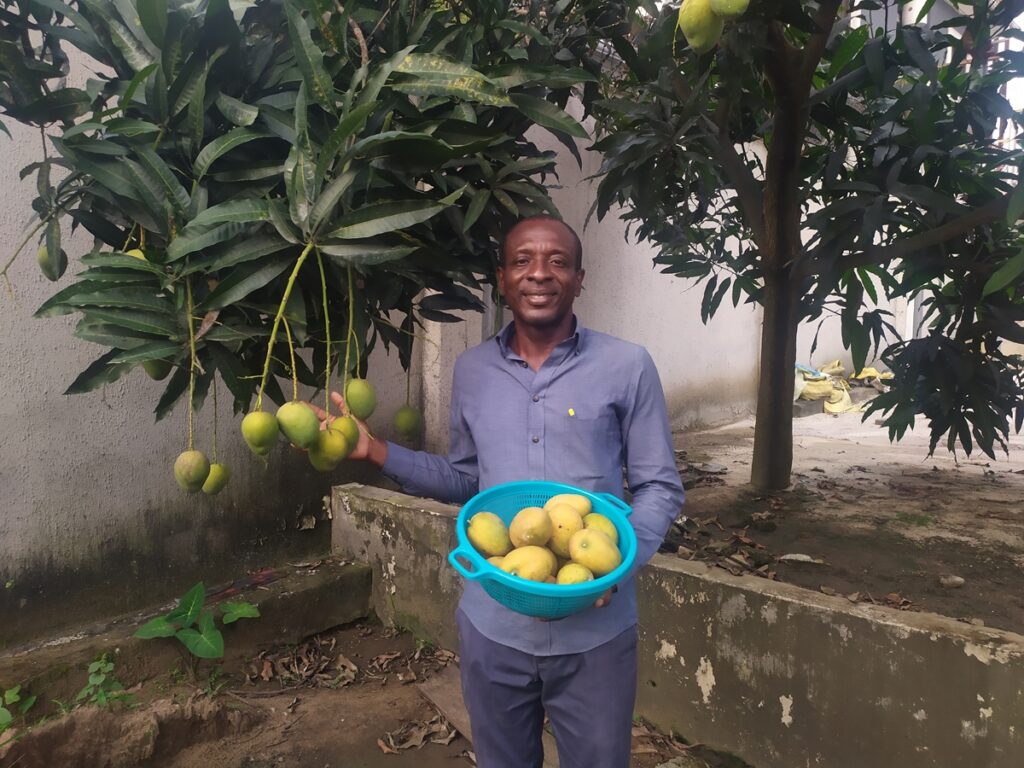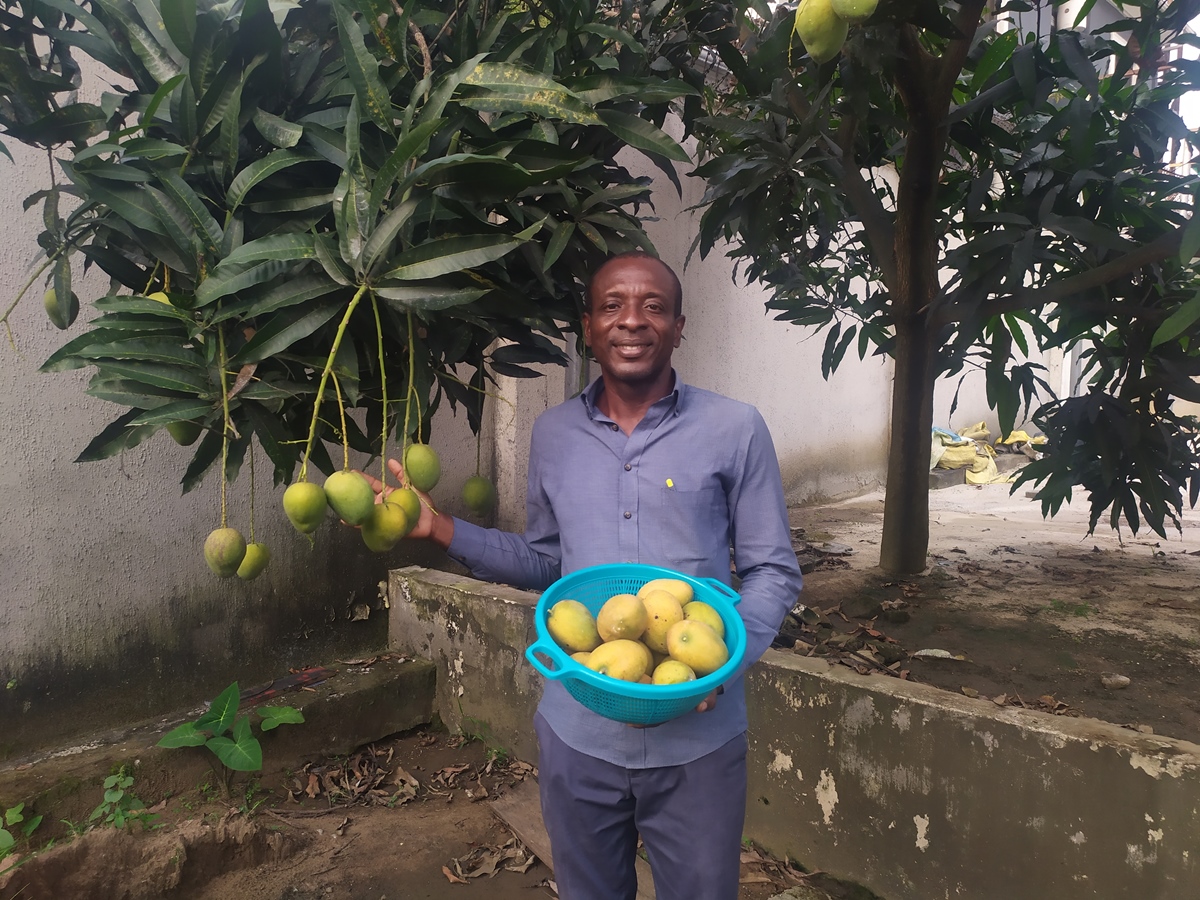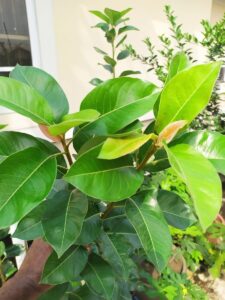Mango tree grows easily either in pots / containers or in the ground. There are so many varieties of Mango with different colors tastes, shapes and sizes. Mango are healthy fruits packed with healthy nutrients.

Planting Environment
Mango can be planted in pots/containers or in the ground.
Mangoes grown in pots or containers should only be watered when the soil is dry. Watering everyday may cause the roots to rot.
Planting Materials
Mango should be planted as Cuttings, Air layered seedlings, grafted seedlings propagated from mature plants, this is to ensure that you get seedlings that will bear fruit within 2 to 3 years and also seedlings that will have the same characteristics as the parent tree.
Soil Types
Mango requires soils that drains well and also rich in organic matter, loamy soil is a very good example. Mango that will be planted in pots or containers need soils that drains very well. Planting Mango in pots or containers using a soil that drains poorly will cause the plant to be stunted or cause the plants to die. Excess water retention in soil inside containers or pots with plants is totally undesirable to plants.
Sunlight Requirement
Mango requires full sunlight hours of at least 8 hours a day, if your Mango tree is not getting enough sunlight daily, the tree will not produce many fruits. Before you plant your Mango tree in the ground, you need to ensure that tree will experience at least 8 hours of full sunlight.
Fertilizer and Nutrient Requirements
Mango requires fertilizers that contains Macro and micro nutrients. The best fertilizers for Mango are either organic fertilizers like Chicken Manure or in organic fertilizers that has all the Macro and Micronutrients. If your Mango is planted in a pot only apply organic fertilizers to the soil and in-organic fertilizers as a foliar spray on the leaves. Apply chicken manure (ensure its well composted) every 4 weeks and also apply a foliar fertilizer with Macro and micro nutrients every 4 weeks too. For Mango planted in containers, ensure you water them daily (Depends on the weather), Mango planted in containers does not require watering every day, only apply sufficient water whenever the soil in the container is dry.
Pest & Disease Management
Mango trees are regularly infected by insects as well as fungal diseases. Common pests that attack Mango are Thrips, Scale insects, While flies, and Mealybugs.
Organic Pesticides like neem oil and insecticidal soaps can be used however this will not kill the pests rather it simply chases them away for a brief period. In-organic pesticides are the only solution towards killing the insects, their eggs and larvae. Pesticides should be applied once a month to prevent infestation.
Mango trees are also regularly infected by fungi most especially during the raining season where the splashing of water and the damp atmosphere makes it easy for fungal spores to be spread. Common Fungal and Bacterial diseases of Mango are Anthracnose and Bacterial Canker, Bacteria Gummosis.
Organic fungicide like neem oil helps to prevent Anthracnose, also cow dung applied into the soil has been known to cure bacterial Gummosis, however In-organic fungicides are the best choice since they have both preventive and curative capabilities. Fungicides should be applied every 2 weeks to 3 weeks During the rainy season applying fungicides every 2 weeks will prevent infection from Fungi. Neem oil should be sprayed every 2 weeks once the fruits are formed to prevent Anthracnose disease infecting the fruits.
Time to Fruiting
Mango grown by seed takes about 5 to 6 years before they start bearing fruits, commercial harvest from seed grown Mango will occurs in the 7th year.
Mango grown by cuttings, air layering, and grafting takes about 2 to 3 years before they start bearing fruits. Commercial harvest from trees grown from cuttings, air layering and grafting occurs in the 5th year.
Mango trees fruits usually bear fruits one to two times in a year. The second fruiting is not guaranteed due to climatic conditions and the variety of the mango tree. However, in many regions the second fruiting of mango trees is usually during the rainy season and many mango trees which produce flowers during the raining season have most of the flower panicles infected by fungal diseases and as such the fruit production will be very very poor. There is a very effective solution which guarantees that mango trees that produce flowers during the raining season produce many fruits.
Mango trees are self-pollinating which means you do not need another tree for pollination.
Harvesting of Fruits
Mango trees produce fruit that is ready for harvest 100 to 150 days after flowering. The shelf life of mangoes depends on the variety, some variety have a shelf life of few days while some variety have a shelf life of 10 days without refrigeration.




